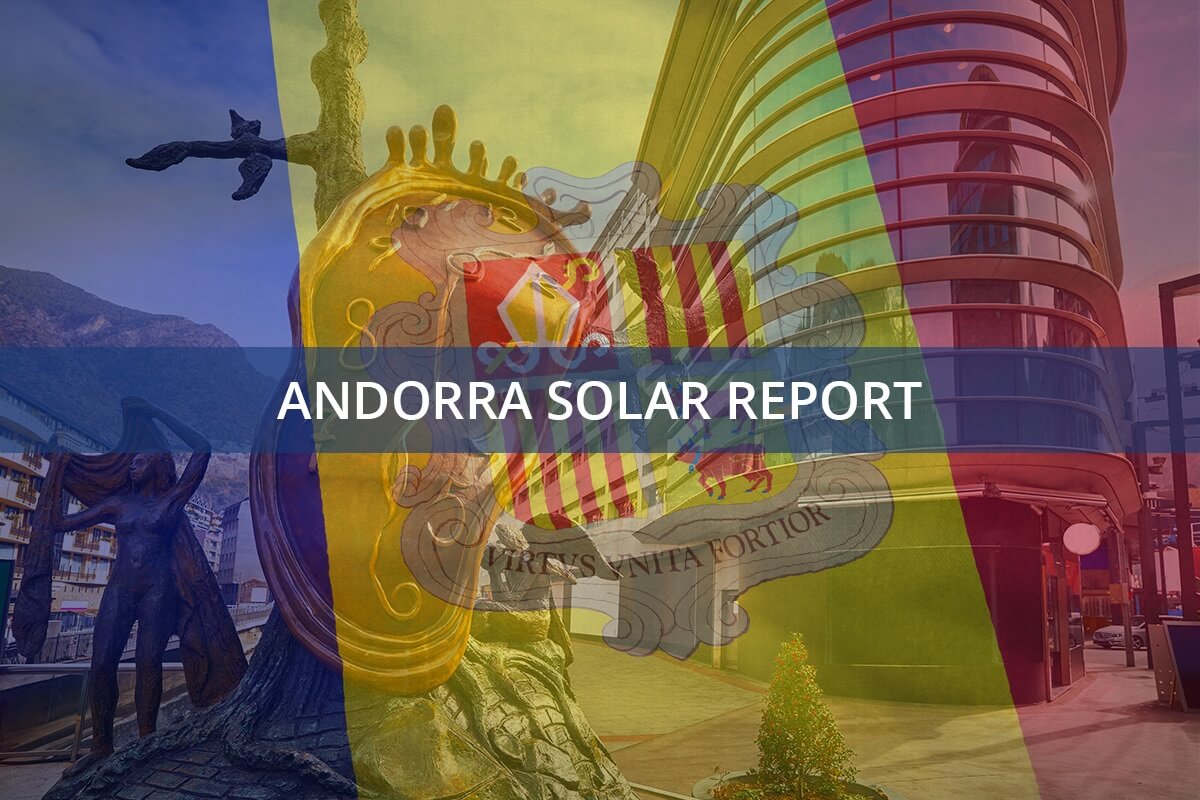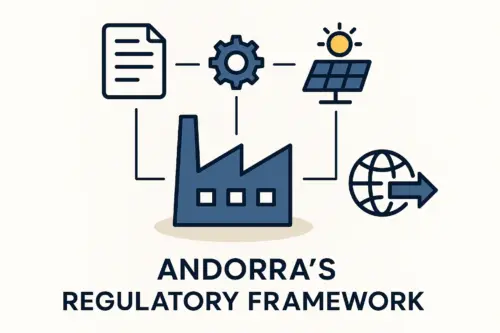The global shift to renewable energy is undeniable, isn’t it? And it’s got all of us thinking more about where our solar modules actually come from. As we look to build stronger local supply chains and boost our energy independence, even smaller, strategically placed countries like Andorra are starting to catch our attention. Tucked away there in the Pyrenees between France and Spain, Andorra has a pretty unique economic profile. So, the big question is: is it geared up to support something as specific as solar module manufacturing? Let’s take a really close look at its infrastructure – an absolutely vital first step before anyone makes any big moves.
Now, Andorra certainly has a developed economy, a fantastic spot in Europe, and it’s clear they’re investing in their general infrastructure. However, when we start talking about industrial-scale operations, those very specialized utility needs, and the real nitty-gritty of manufacturing logistics, prospective solar module producers will find there are some specific challenges to weigh up, and weigh up carefully.
Table of Contents
Andorra’s Current Industrial Profile & Site Availability
Historically, Andorra’s economy has largely revolved around tourism and retail – we all know it for its stunning slopes and shopping! Its manufacturing footprint, to be honest, has been quite modest, traditionally producing items like furniture, cigarettes, and some food products (according to good sources like WorldAtlas and ERIH). But things are definitely changing; the Andorran government is keen to diversify its economy, and initiatives like the Andorra Research + Innovation agency are actively pushing for new sectors to take root.
When you’re scouting for industrial sites for solar panel production, here’s what you’ll need to keep in mind:
- Existing Industrial Areas: You’ll find that Andorra has limited, and generally smaller, industrial zones. There’s some interesting talk about repurposing sites, like the old thermal power plant in Andorra la Vella, for logistics and perhaps some light processing (Endesa has mentioned this).
- Innovation Hubs: There are exciting plans for an “Andorra Innovation District” in motion, which sounds like it could be a fantastic breeding ground for tech-driven businesses (IASP is behind this). The big question, though, is whether these hubs can genuinely handle the space and specific demands of a full-scale solar module production line. These often need plenty of room for production, warehousing, and possibly those all-important clean-room environments.
- Zoning and Land Availability: Let’s be frank here: Andorra’s mountainous terrain naturally means that large, flat areas ideal for industrial development are pretty scarce. Entrepreneurs will really need to dig deep into zoning laws and assess land suitability very thoroughly.
So, what’s the initial takeaway from all this? Well, Andorra’s current industrial landscape seems better suited for small to medium-sized operations, perhaps specialized component manufacturing, or even pilot projects. Trying to set up large-scale, mass-production solar module facilities could run into some serious spatial and zoning roadblocks.
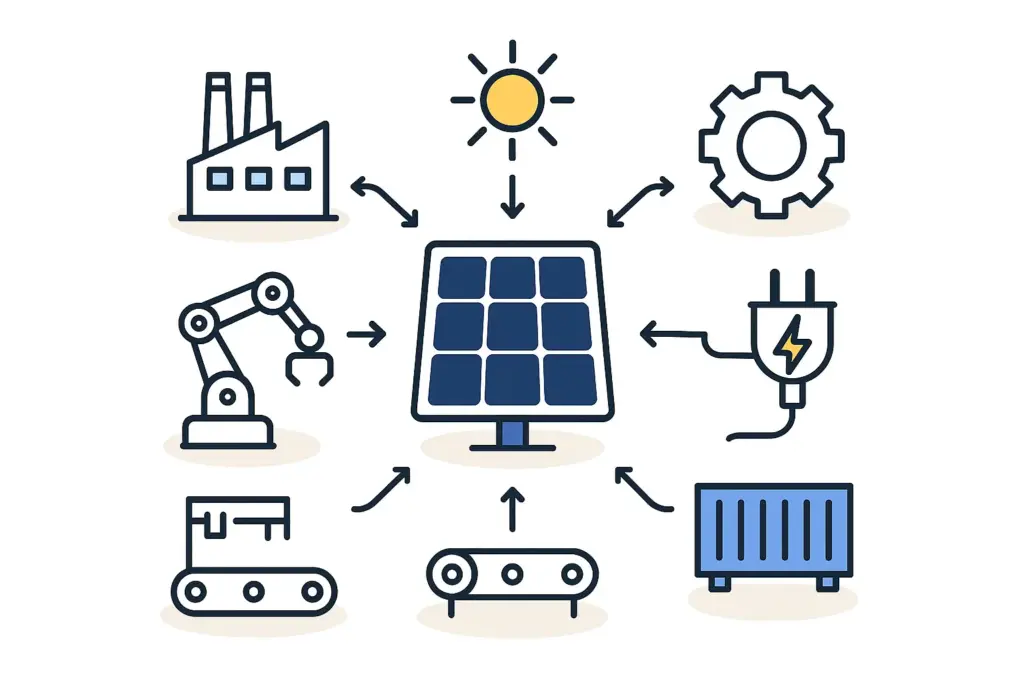
Transportation & Logistics: Connecting Landlocked Andorra
For any manufacturing business, smooth logistics are simply non-negotiable – you need raw materials coming in efficiently and finished products going out reliably. Andorra’s landlocked position brings both unique challenges and, potentially, some interesting opportunities to the table.
Here’s the breakdown on how things move:
- Road Network: Andorra relies entirely on its well-kept road network, which spans about 269 km. Key routes like the CG-1 connect down to Spain, and the CG-2 (which goes through the Envalira Tunnel) links up to France (Wikipedia’s page on Transport in Andorra is a good reference). These roads are generally good, though those Pyrenean winters can occasionally throw a spanner in the works for accessibility, despite robust snow-clearing efforts – something to always keep in mind.
- Air & Rail Access (via Neighboring Countries): The Principality doesn’t have its own airports or railways. This means businesses are dependent on nearby international airports like Barcelona-El Prat (roughly 200 km away – quite a hop) and Toulouse-Blagnac (about 196 km away) for air freight. Similarly, if you’re thinking rail freight, you’ll be using terminals in neighboring countries, such as L’Hospitalet-près-l’Andorre in France or larger hubs down in Spain. This all points to needing a really solid multimodal logistics plan from day one.
- Logistics Services & Customs: You’ll find several logistics providers serving Andorra, including those handling customs clearance (companies like Traldis Porta, Mainfreight, and Nagrup pop up). Since Andorra isn’t part of the EU’s customs territory, getting those customs procedures absolutely right is crucial for importing raw materials and exporting those finished solar modules efficiently. No room for error there!
The bottom line on transport? While Andorra’s road network is efficient for its size, relying on neighbors for air and rail freight definitely adds complexity and potential costs to your supply chain. Smooth customs operations will be absolutely vital for any Andorran manufacturing venture hoping to succeed here.
Energy Infrastructure: Powering Production
Solar module manufacturing can be a real power guzzler – no surprises there. That means a reliable and cost-effective electricity supply isn’t just a nice-to-have; it’s utterly essential.
So, what’s the energy situation like on the ground?
Ready to make big Profits?
The solar Industry is Booming
WE HELP NEWCOMERS to the solar industry start their own solar module production line. Customers can make BIG PROFITS by selling modules and finding investors, without wasting money and time on things they don't need!
- Supply & Reliability: Forces Elèctriques d’Andorra (FEDA), the state-owned utility, is the one handling electricity generation and distribution. The good news is that FEDA has been working on improving supply quality and promoting sustainability (Hitachi Energy has partnered with them on projects). Plus, the Andorran government and FEDA are investing in grid modernization and Andorra renewable energy projects. This includes developing utility-scale solar parks, like the 1.55 MWp plant at Grau Roig, to help diversify their energy sources (PV Tech and Endesa have covered these developments).
- Costs & Incentives: Industrial electricity prices across Europe, Andorra included, have been on a bit of a rollercoaster lately, haven’t they? While some easing was expected for 2025, they’re likely to stay above those pre-2021 levels (Oxford Economics has some good analysis on this). On the plus side, and this is a big plus, the Andorran government offers subsidies for companies investing in energy efficiency – potentially covering 30-40 % of costs – along with tax deductions (Decomant Group is a source for this info). That could make a real difference.
- Import Dependency: Now, a key point to really note is that Andorra leans heavily on energy imports, mainly electricity from Spain and France. This reliance can expose businesses to price swings in external markets and naturally affects long-term energy security.
Looking at the overall energy picture, while FEDA provides a generally reliable electricity supply and those government incentives for energy efficiency are a very welcome bonus, Andorra’s high dependency on imported energy and potentially higher industrial electricity costs (when compared to some larger manufacturing nations) are significant points to ponder for an energy-hungry industry like solar panel production.
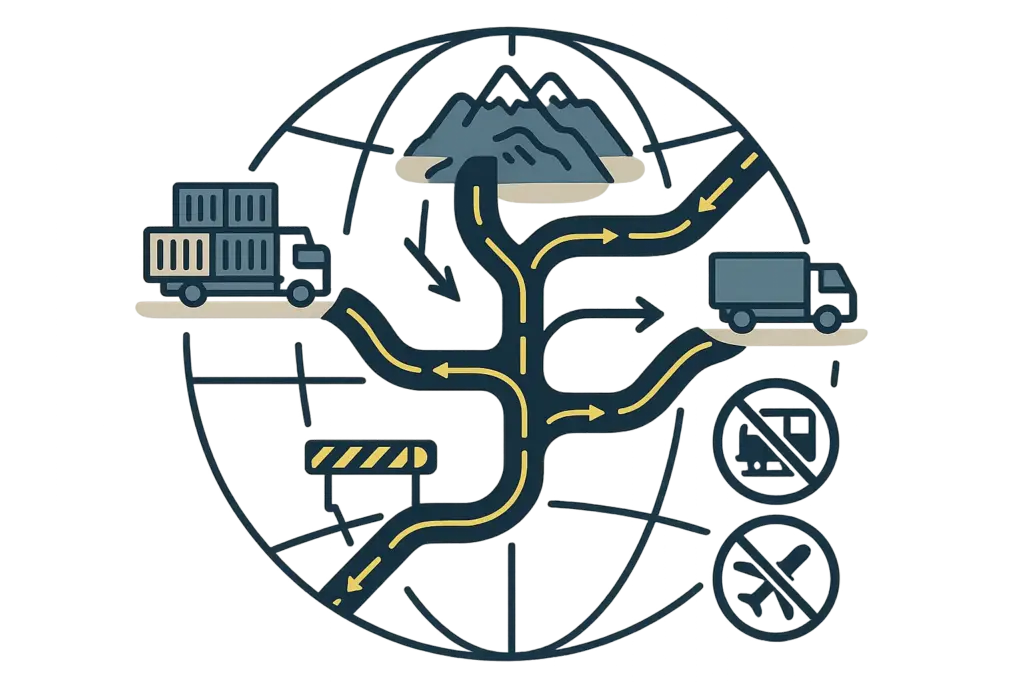
Essential Utilities: Beyond Electricity
Of course, manufacturing isn’t just about keeping the lights on and machines running. You’ll also have critical needs for water, waste management, and solid telecommunications. These are just as important.
Let’s see how Andorra stacks up in these areas:
- Water Supply: Producing solar modules involves processes like cleaning and rinsing, which demand a consistent supply of industrial-grade water. While you can find studies on household water demand (like some on MDPI), and directories listing water utility suppliers in Andorra (Environmental Expert is one), you’d need a much more detailed look. Specifically, can they supply large volumes for industrial use? What’s the cost of industrial water? And, crucially, can wastewater treatment facilities handle the specific byproducts that come from solar cell and module manufacturing? These are crucial questions that need concrete answers.
- Waste Management: Manufacturing, by its nature, creates waste – and some of that (like broken cells, chemical residues, and packaging) might need specialized handling and disposal under strict environmental regulations. Prospective manufacturers absolutely must thoroughly investigate Andorra’s industrial waste management setup, its recycling capabilities, and the rules relevant to solar panel production byproducts. Due diligence here is key.
- Telecommunications: Here’s a clear strength, and it’s a big one: Andorra boasts a highly developed telecommunications infrastructure. Andorra Telecom has invested heavily in digital transformation and provides extensive fiber optic coverage right across the country (Andorra Telecom and PR Newswire have highlighted this). This means excellent access to high-speed, reliable internet and data services – which, as you know, is essential for modern manufacturing, from process control to supply chain management and all your communications.
So, on utilities, it’s a bit of a mixed bag, isn’t it? Andorra’s telecommunications are definitely top-notch. However, the capacity and suitability of water supply and industrial waste management systems for the specific needs of solar module manufacturing will require careful, site-specific investigation that goes well beyond general utility provisions.
The Solar Module Manufacturing Angle: Specific Needs
Now, let’s try and connect all these dots: how does Andorra’s general infrastructure stack up against what a solar module factory truly needs on a day-to-day basis?
- Facility Requirements: Solar panel plants often need controlled environments (like clean rooms for cell processing, though module assembly is generally less strict on this front). They also require dedicated areas for handling fragile materials such as glass and silicon wafers, plus a considerable physical footprint for assembly lines and storage. Think big spaces.
- Raw Material Sourcing: Key materials – things like solar cells (if you’re not making them on-site), glass, aluminum frames, encapsulants (like EVA), and junction boxes – would almost certainly need to be imported. The logistics of bringing these often bulky or delicate materials into landlocked Andorra, clearing them through customs, and getting them safely to the factory site are critical considerations.
- Regulatory Environment & Standards: Manufacturers will need to navigate Andorra’s business registration processes, labor laws, and environmental permits. And, importantly, if you’re targeting export markets, especially the EU, your modules must comply with international standards (like IEC certifications) and potentially align with initiatives such as the EU’s Net Zero Industry Act, which is all about boosting domestic clean tech manufacturing (PV Tech has good coverage on this).
SWOT Analysis: Solar Manufacturing in Andorra
To give you an even clearer picture, here’s a quick SWOT (Strengths, Weaknesses, Opportunities, Threats) analysis specifically for solar manufacturing in Andorra:
Strengths | Weaknesses
- Strategic location between France & Spain | Landlocked, heavy reliance on neighbors for air/rail freight
- High-quality telecommunications infrastructure | Small domestic market for finished goods (export is key)
- Government interest in economic diversification | Limited existing large-scale industrial sites & a workforce that might need specific manufacturing experience
- Energy efficiency incentives available | High energy import dependency & potentially higher industrial energy costs
- Political stability & generally favorable tax regime | Specific utility capacities (water, waste) for heavy industry will need thorough verification
- Strong general infrastructure (roads, telecom) as noted by major bodies like IMF & S&P Global | Non-EU customs procedures add a layer of complexity and potential cost
Opportunities | Threats
- Develop niche or specialized solar products (high-value, low-volume?) | Competition from established global manufacturing hubs with massive economies of scale
- Serve as a specialized regional hub if logistics are cleverly optimized | Fluctuations in global raw material prices & their availability
- Leverage the national focus on innovation (e.g., Andorra Innovation District) | Changes in EU trade policies or renewable energy regulations that could impact Andorra
- Potential for strong “green branding” due to its mountain location & renewable projects | Skill gaps for specialized manufacturing roles, requiring training or recruitment
- Growing European demand for locally (or at least, more locally) produced solar modules | Those logistical challenges could significantly increase operational costs if not managed perfectly
Want to learn more or need expert help? Visit our free e-course or explore our services. Or, if you’re ready to dive deeper, our Premium Business Plan E-Course offers personalized guidance to get your venture off the ground. Let’s make your solar journey smooth and successful.
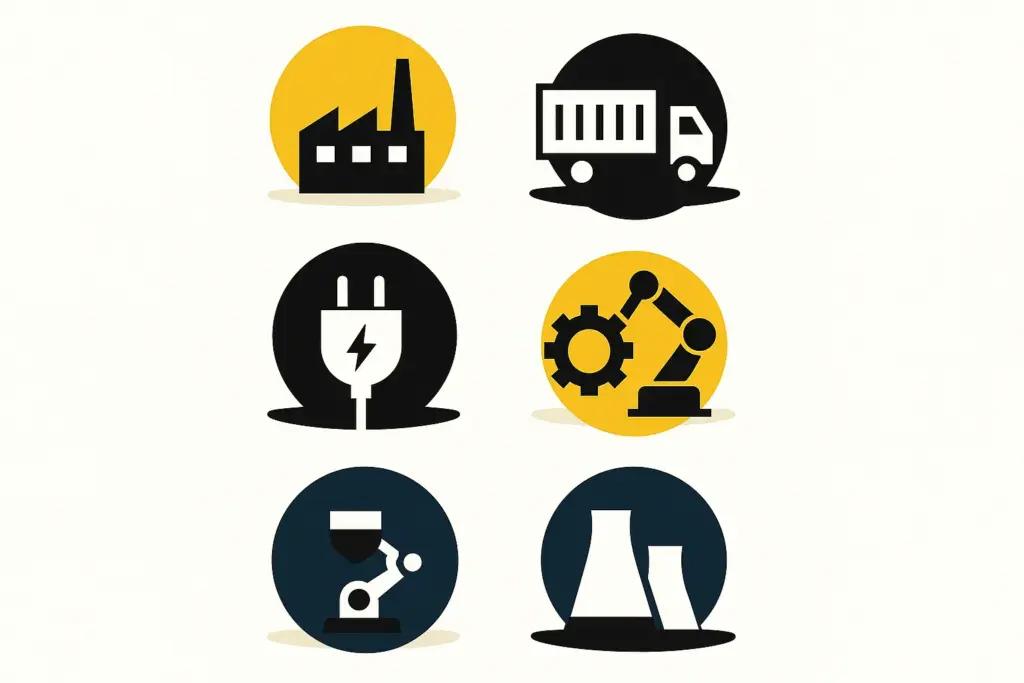
Conclusion: The Verdict on Andorra’s Preparedness
So, what’s the final word on Andorra for potential solar module manufacturers? Well, if we’re being completely honest, it’s a bit of a mixed bag. The country really shines with its strategic European location, its excellent telecommunications (a huge plus!), a generally stable economic environment backed by government support for diversification, and its own growing renewable energy initiatives. These are all strong positives.
However, some significant questions loom large, especially if you’re thinking about large-scale solar module manufacturing right now. The main hurdles, as we’ve seen, include:
- Limited Industrial Space: Finding suitable, large-scale industrial sites is a real challenge. You can’t just conjure them out of thin air in the mountains.
- Logistical Complexities: Managing the import of raw materials and export of finished goods isn’t straightforward, given its landlocked, non-EU status. It’s doable, but it needs meticulous planning.
- Energy Costs & Dependency: The reliance on imported energy and potentially higher industrial electricity tariffs need very careful calculation and consideration in your business model.
- Specialized Utility Capacity: You’ll absolutely need to confirm adequate industrial water supply and waste management facilities specifically for solar manufacturing needs – this can’t be assumed.
For entrepreneurs or companies exploring Andorra, the most promising path forward likely involves focusing on niche or smaller-scale operations, perhaps specialized high-value components, or maybe starting with pilot production lines to test the waters. A comprehensive feasibility study – and I mean really comprehensive, including detailed site surveys, confirmed utility capacities from the providers, and meticulous logistical planning – is absolutely indispensable. No shortcuts here!
While Andorra might not be quite ready for plug-and-play, large-scale solar module factories today, its ambitions for economic diversification and its undeniably strategic position could make it an intriguing prospect for specific types of solar manufacturing ventures – provided those infrastructure and logistical aspects we’ve talked through are carefully, and successfully, addressed.
Ready to dive deeper into specific business models? Explore the full spectrum of Solar Manufacturing Opportunities in Andorra for more detailed insights.
Frequently Asked Questions (FAQs)
Q1: What are the biggest hurdles to setting up a manufacturing plant in Andorra?
A: Honestly, the main challenges really boil down to its landlocked geography (which means you’re relying on robust road logistics and your neighbors for air/rail freight), its non-EU status (which adds that extra layer of customs procedures), the scarcity of large, ready-to-go industrial-zoned land, and potentially higher energy costs because of that import dependency we talked about.
Q2: Does the Andorran government offer any specific incentives for manufacturers?
A: Andorra generally offers a favorable tax environment for businesses, which is a good starting point. For energy use, there are indeed subsidies for investing in energy efficiency, which is definitely helpful for manufacturers. If you’re looking for incentives tailored specifically to large-scale solar manufacturing, your best bet would be to connect directly with Andorran economic development agencies like Andorra Research + Innovation to see what might be possible.
Q3: How does being outside the EU affect manufacturing in Andorra, especially for exports?
A: Good question! Since Andorra isn’t in the EU’s customs union, any goods imported into Andorra and, more importantly, those exported to EU countries (or elsewhere) will face customs declarations, duties, and taxes. This means having diligent customs brokerage is absolutely key, and it can add to lead times and overall costs compared to manufacturing directly within the EU single market.
Q4: What’s the energy supply like for industrial users in Andorra?
A: FEDA, the national utility, generally ensures a reliable electricity supply, which is crucial. However, as we discussed, Andorra is heavily dependent on electricity imports from Spain and France. While the government is actively promoting local renewable energy generation (which is great!), this dependency can impact long-term price stability and supply security, especially for energy-intensive industries like solar manufacturing.
Q5: Is there a skilled workforce in Andorra for solar module manufacturing?
A: Andorra’s workforce is largely experienced in sectors like tourism, retail, and finance. So, attracting or developing a skilled workforce for specialized manufacturing roles – think technicians and engineers specifically for solar panel production – would likely be a key task for any new venture. This might involve investing in local training programs or potentially recruiting talent from abroad.

